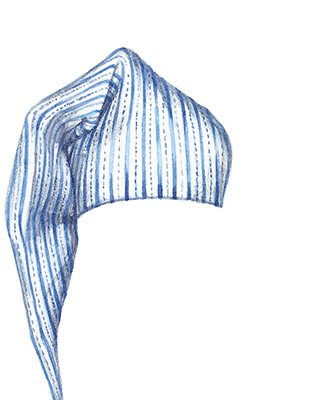What does your hat say about you?
The British man's love affair with hats may not be quite as ardent as it once was, but its fascinating to see the part headgear has had to play in our social and cultural history
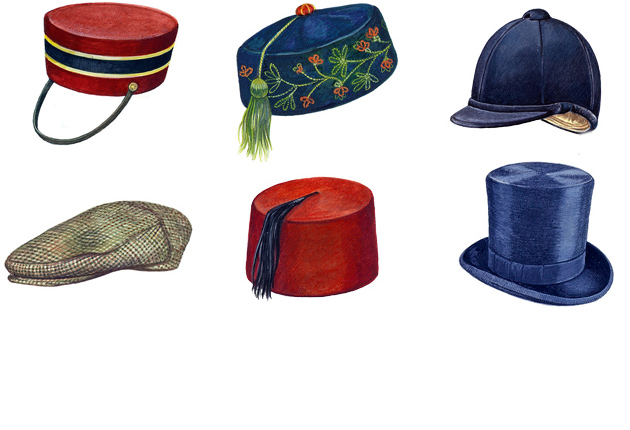
From Winston Churchill’s homburg to Charlie Chaplin’s bowler, much of Britain’s history can be told through the headgear worn by its best-known politicians, performers and literary characters. Hats have evolved enormously since the days when their primary function was to protect their wearers’ heads from bad weather and weapons.
By Victorian times, they had become part of every self-respecting gentleman’s attire—a man would no more leave the house without a hat than he would without his trousers. Hats became a symbol of class and occupation, from London’s bowler-clad bankers and stockbrokers to the cloth caps worn by the country’s manual labourers on farms and in factories.
Even Britain’s best-loved fictional rogues have trademark hats: the Artful Dodger’s battered top hat, Ebenezer Scrooge’s night cap and Del Boy’s flat cap, to name but a few. Customs such as hat-tipping and launching mortar boards at graduation are deeply embedded in the social and cultural fabric of the country and, although 21st-century wardrobes might contain fewer hats than their predecessors, social occasions such as Royal Ascot and the Henley Royal Regatta ensure that, when it comes to hat heritage, Britain still takes the crown.
Bowler The first bowler was made in 1849 by James Lock & Co’s chief hatter, Thomas Bowler, for Edward Coke, a nephew of the 1st Earl of Leicester (of the second creation) of Holkham Hall in Norfolk. Coke wanted a close-fitting, low-crowned hat to protect the estate gamekeepers’ heads from low-hanging branches and attacks from poachers. It’s thought that, when he went to London to view the hat, he stamped twice on the crown to determine its durability, nodded in approval and paid 12 shillings for it. The estate’s gamekeepers still wear bowlers on shoot days.

Top hat There has never been a more sophisticated and dominant design than the top hat, which replaced tricornes and bicornes as a status symbol for gentlemen at the turn of the 19th century. Apparently, when the haberdasher John Hetherington donned the first topper on the streets of London in 1797, children screamed, women fainted and Hetherington was arrested for wearing a hat ‘calculated to frighten timid people’.
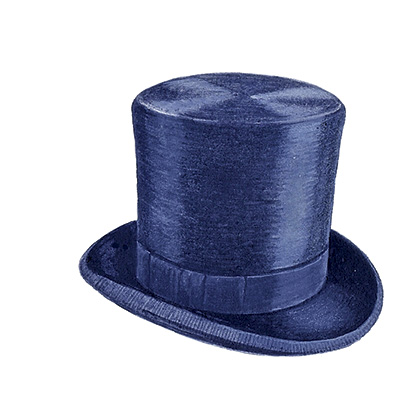
Trilby The difference between a trilby and its big brother, the fedora, comes down to the size of the brim and the nature of the crease at the crown the former has a sharper crown and a narrower brim. It was named after a fictional character the eponymous heroine of George du Maurier’s 1894 novel Trilby. It became a wardrobe staple when men swapped their formal, stiff hats for something lighter and more comfortable.
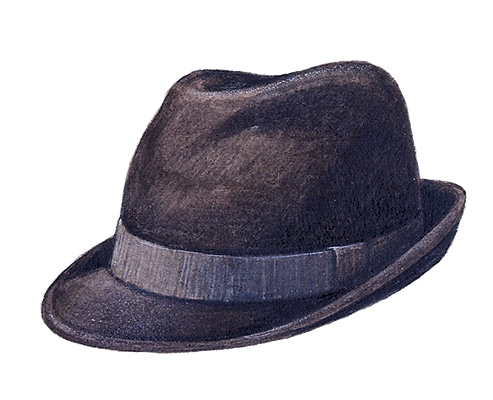
Fedora Named after the heroine of a French play written by Victorien Sardou in 1882 and made famous by American icons such as Frank Sinatra and Humphrey Bogart, the soft-brimmed, felt fedora made its way into British men’s wardrobes in the mid 1920s. It was also popularised by Edward VIII, who chose to wear one on royal engagements.
Exquisite houses, the beauty of Nature, and how to get the most from your life, straight to your inbox.
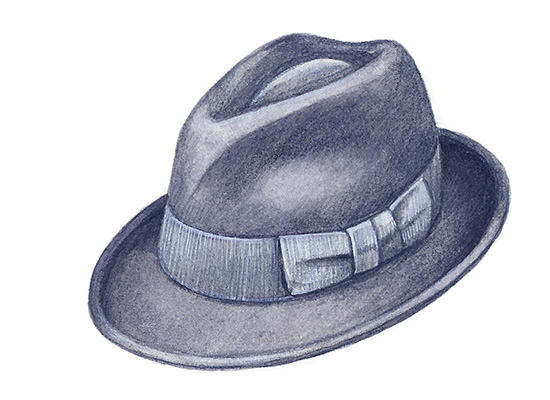
Deerstalker/stalker This two-flapped hat was a vital part of a Victorian gentleman’s country ensemble, worn principally for shooting and especially for deerstalking. Although indelibly associated with Sherlock Holmes, there is not a single mention of a deerstalker in any of Conan Doyle’s stories. It was Sidney Paget who gave the sleuth a hat and cape in his illustrations for The Strand magazine—they first appear in The Boscombe Valley Mystery in 1891.
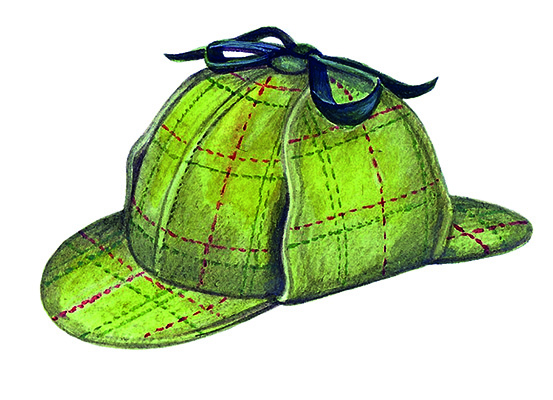
Panama Genuine Panama hats are made exclusively in Ecuador, where they’re woven from the straw-like stems of the toquilla palm. Named in honour of the workers who built the Panama Canal and wore them for protection against the sun, the hats became a British summer staple by the early 20th century. The black band around the base is said to originate from 1901, as a mark of respect following the death of Queen Victoria.

Homburg This distinctive hat, with its curled brim and uniform dent running from back to front, was supposedly popularised by Edward VII, who spied it on a trip to the German town of Bad Homburg in the early 1880s. Winston Churchill was also a big fan and the dapper detective Hercule Poirot rarely left the house without his.
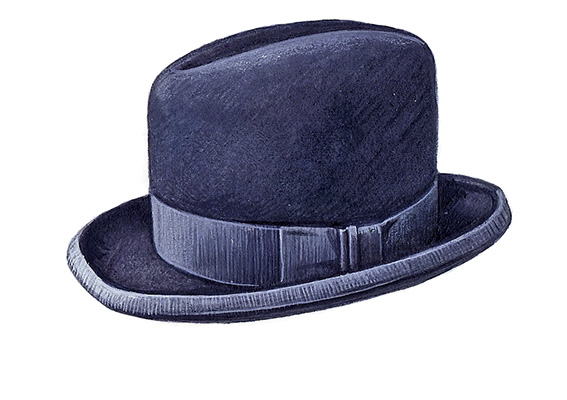
Forage cap Forage caps (also called peaked caps) were made out of serviceable parts of worn-out uniforms and were worn by British cavalrymen undertaking work duties such as foraging for food for their horses. The name forage cap was later generally applied to undress caps worn by men from all regiments as an off-duty substitute for their official headgear.
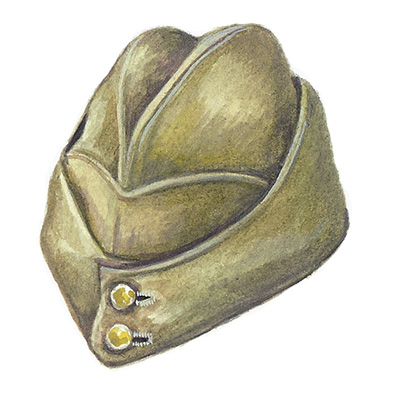
Cavalier Hugely popular in the 17th century, this wide-brimmed, flamboyant felt hat often embellished with an ostrich plume during the English Civil War, was named after Charles I’s Cavaliers. The King’s loyal supporters, who were renowned for their extravagant and blousy-sleeved clothing, liked to wear the hat unconventionally, with one side of it cocked up, rather like a slouch hat.

Boater The origin of today’s boater is the sailor’s hat issued to midshipmen in the Royal Navy near the end of the 19th century. They became popular with gentlemen as a summer alternative to the bowler and, for a while, were also worn by costermongers in the East End of London. Since the turn of the last century, however, the Panama has gradually eclipsed the boater, which is now a rare sight—apart from at the Henley Royal Regatta.
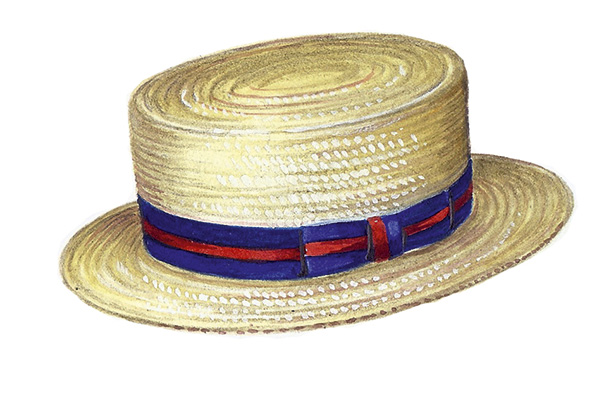
British pith helmet Made from the soft, spongy tissue found inside a tree’s branches and trunks, the pith helmet first became popular with military personnel in the Tropics wanting to keep the scorching sun at bay. During the Anglo-Zulu war, British troops dyed their helmets with tea, mud or other makeshift means of camouflage. Subsequently, khaki-coloured pith helmets became issue for active tropical service.

Sugar-loaf Named after the loaves into which sugar was formed, this was a style worn during the Stuart Cromwellian era when the hat was associated with the anti-monarch cause during the Civil War. Famous wearers include the 1605 Gunpowder Plot conspirators.
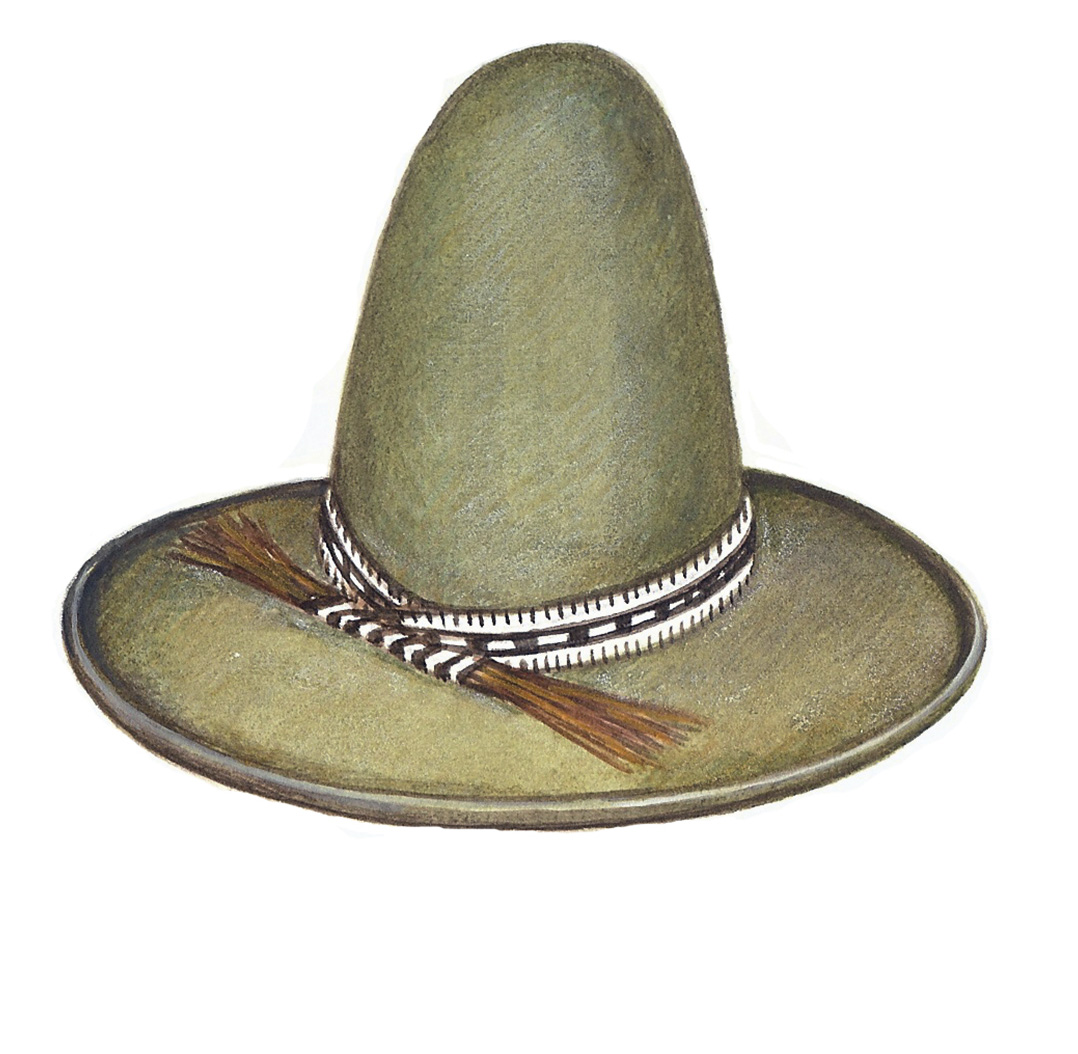
Bellboy ‘Can I help you with your luggage, Sir?’ The bellboy hat, which is still worn today by hotel porters, is based on a 19th-century military drummer’s cap and usually matches the rest of the bellboy’s uniform.
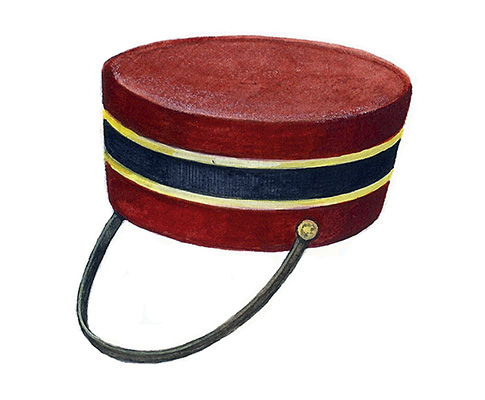
Medieval liripipe Nobody seems to know much about the origin of the word used to describe the dangling extension of a medieval hood. Liripipes were at first worn by academics in the 14th and 15th centuries as part of their formal dress. The closest example to a liripipe that survives today is the tip of a graduate’s hood.
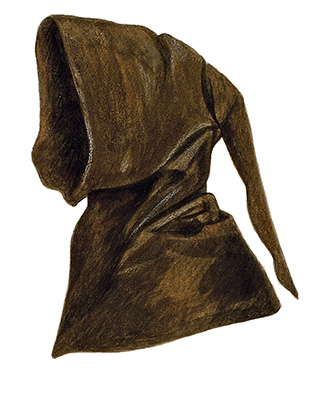
Mortar board The square, academic cap, which is traditionally flung in the air at graduation ceremonies, gained its unusual name thanks to its similarity (in appearance) to the board bricklayers use for their mortar. Some historians suggest its design descended from the biretta, sported by Roman Catholic clerics, scholars and professors.
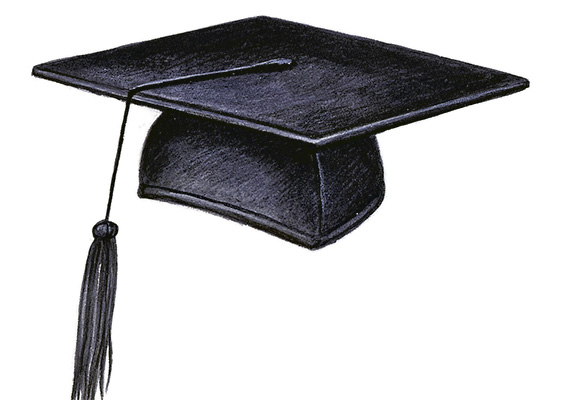
Smoking cap A smoking cap (also called a lounging cap) evolved to keep out draughts, but remained en vogue long after improvements in heating eliminated the need for it. This informal gentlemen’s wear was particularly popular in the mid 1800s, when, given the potential for unique embroidery, it made a perfect gift from a wife to her husband.
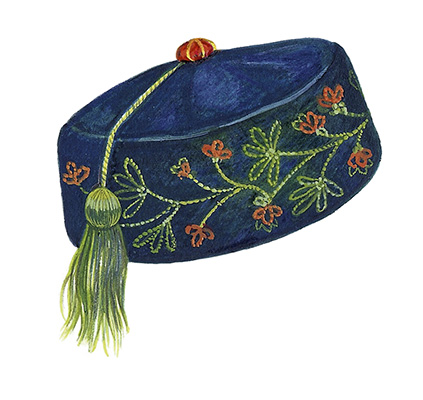
Tricorne Invented by the Spanish and quickly adopted by the rest of Europe, the three-point tricorne is one of the most easily recognisable pieces of 18th-century headwear. Its broad, brimmed gutters combined form with function, channelling rain away from the faces of its wearers usually military and naval officers. The hat survives today as part of the traditional dress of the Chelsea Pensioners.

Bicorne or cocked Descended from the tricorne, the bicorne has just two brims, which are folded up at the back and front. British army officers sported this sort of hat until the end of the First World War, although its most famous wearer was Napoleon, who broke with convention and wore his sideways. By the 20th century, the British had started to refer to bicornes as cocked hats.

Flat cap Government intervention in headgear is rare, but, in 1571, in an attempt to spur on a flail- ing wool trade, parliament passed legislation that required all men—except noblemen over the age of six to wear a woollen cap on Sundays and holidays or else be fined. The flat cap became a symbol of working-class culture in the 19th and 20th centuries and is still popular today with both country folk and trendy urbanites.
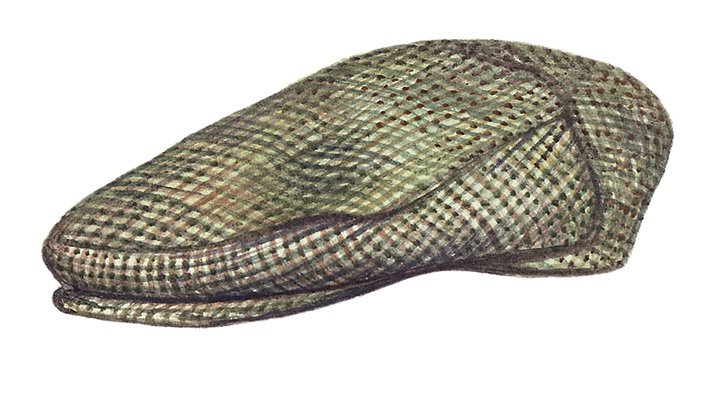
Newsboy cap Worn by paperboys in the early 20th century, this cap is made from the same fabric as the flat cap, but is sewn together from the top rather than from the back, which gives it its rounder body and distinctive, sliced-pie look. Nowadays, it is often seen on the heads of racing folk—both men and women.

Pork-pie The pork-pie hat (named for its resemblance to the picnic staple) was the hat of choice for many well-dressed Victorian city dwellers. It later morphed into a key element of London street style, probably influenced by the Rude Boy culture from Jamaica and the trilbies and pork pies worn by American gangsters on screen.

Highland feather bonnet This distinctive piece of headgear was used mainly by the Scottish Highland infantry regiments of the British Army, from about 1763 until the outbreak of the First World War. Despite its elaborate appearance, it’s a highly practical piece of military gear as it’s lightweight and the internal cage offers protection from blows.
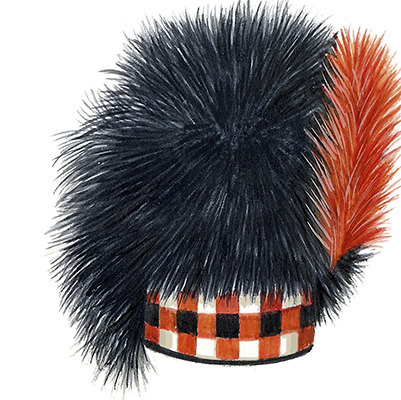
Bearskin British soldiers have worn bearskins since the Battle of Waterloo, where the 1st Regiment of Foot Guards, who defeated Napoleon’s bearskin-wearing Chasseurs, took them as a badge of honour. For the past 200 years, they have perched proudly atop the heads of Guardsmen outside Buckingham Palace. Different regiments are identified by their distinctive plumes.
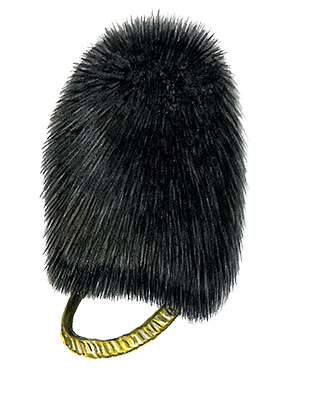
Sham O’Shanter Named after the drunken hero of the 1790 Robert Burns poem, who stayed out late and never listened to his wife, the Tam O’Shanter is a 19th-century traditional Scottish bonnet. It’s also sometimes known as a ‘blue bonnet’, as it was only available in blue due to the lack of chemical dyes.
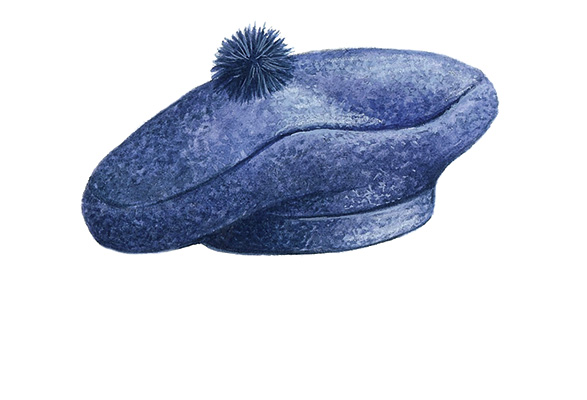
Sailor’s cap One of the most fascinating aspects about these white, visor-less hats are the ribbons around their base, which date back to 1857. Initially designed to bear the name of the wearer’s ship, they were revised with a more generic ‘HMS’ or ‘HM’ when the First World War broke out and the whereabouts of Her Majesty’s vessels needed to be kept secret.
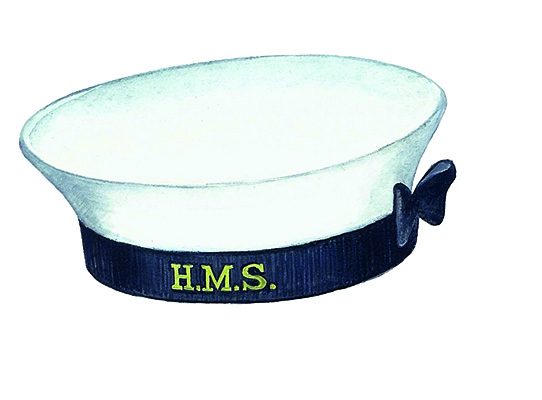
Opera The problem with wearing a top hat to the opera is where to put it when you take it off your head. The solution, decided Frenchman Antoine Gibus in 1812, was a collapsible topper that used an intricate system of steel springs to enable it to be concertinaed and easily stowed under a theatre seat.

Policeman’s helmet This instantly recognisable piece of headgear, which was based on a hat called the Pickelhaube worn by the Prussian army, dates back to 1863, when it replaced the officers’ top hats that split easily and gave policemen headaches. These days, forces favour peaked caps that are less likely to fall off and can be worn in cars.
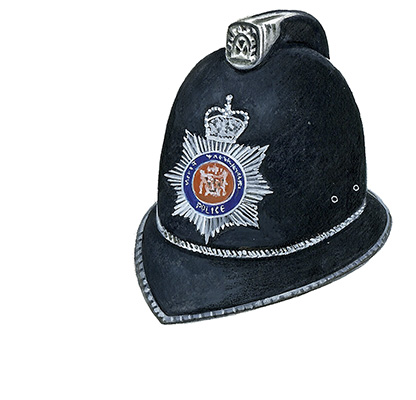
Turban Historically associated with bravery, loyalty and acts of courage, Sikhs who fought for Britain throughout the Empire and their turbans, also known as dastaars and dumallas, have graced our shores since the 1860s. Each turban is 16ft–23ft long and the Sikhs bear it proudly as a symbol of their faith. Earlier this year, New Zealander Harman Singh was lauded for taking off his turban to place it under the head of a small boy who had been hit by a car.

Cricket cap The origins of this soft cap with its small, crescent-shaped brim are hard to discern. However, prints showing the game being played in the 18th century already depict players wearing something very similar. The cap has a symbolic significance: cricket players representing their country in a Test match for the first time are said to receive their first cap and are usually presented with the same.
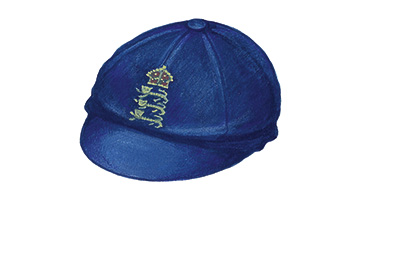
Mitre The right to wear this high, pointed headdress with its two fringed bands hanging down at the back belongs, by Canon Law, only to the Pope, cardinals and bishops. It’s thought that it evolved from a cap worn by officials of the Eastern Roman empire.

Biretta An ancestor of the modern mortar board, the biretta is still occasionally worn by academics, but is more traditionally associated with the Catholic clergy. It started as a sort of skull cap with a small tuft, but, over time, morphed into a soft, square cap, with three or four peaks.

Pillbox During the late Roman Empire, these flat-crowned hats with straight, upright sides, which were worn by Roman soldiers, were known as pilleus or pannonian caps. The pillbox continued to serve as a military hat, but is now usually only worn on ceremonial occasions, particularly in Commonwealth countries.

Beaver cap During the 17th-century reign of Charles I, the fashion among the British elite was for tall hats made from expensive beaver pelts. The pelts had little barbs on the end which, when pressed, interlocked to become one piece of fabric. Historical notes reveal some intriguing superstitions about beaver fur: it was once rumoured that rubbing beaver-fur oil into hair conferred a remarkable memory and that a deaf person would regain their hearing by wearing a beaver hat.
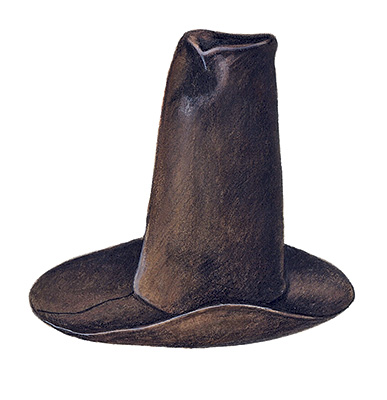
Chef’s toque Some say this distinguished, pleated hat can be traced back as far as the ancient Assyrians in the 7th century; others attribute it to Henry VIII, who, according to one story, beheaded his chef after finding a stray hair in his soup and subsequently ordered the wearing of hats in the kitchen. The number of pleats is said to represent the number of ways a good chef can cook an egg—more than 100.

Astrakhan The loose, curled wool from the coats of south-western Russia’s young Karakul lambs is known for its superior softness and warmth. Astrakhans are most commonly associated with past Soviet leaders, although faux-fur versions are still big in fashion circles in Britain.
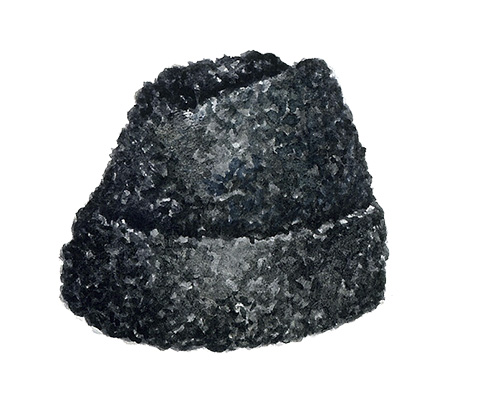
Slouch Instantly recognisable from its pinched crown and wide, floppy brim, the hat that is closely associated with the Australian Army is actually a throwback to Stuart England. It remained a popular form of headdress with British troops in hot climates right up to the Burma campaign during the Second World War.

Patey velvet hunting cap Patey hats first came to Britain in 1695 when the Huguenot Corne family moved from Paris to London, bringing with them the refined skills of Parisian hat-making. Despite the recent demand for safety helmets with harnesses, these stylish, elegant and plush velvet caps continue to cut a dash in hunting fields up and down the country.

Beret French legend credits the biblical figure of Noah with the creation of the beret, claiming that he accidentally found that, once trampled by the animals, the wool he used to waterproof his ark made a tough felt fabric, which he then shaped into a weatherproof hat. Berets are still worn today, notably by the Parachute Regiment of the British Army: members have the affectionate nickname, inspired by the colour, of ‘cherry berets’.

Lord Mayor’s The Lord Mayor of London continues to wear a form of Court dress long abandoned by most modern-day officials. When outdoors, this includes a black beaver plush tricorne hat trimmed with white (or black in the event of memorials and funerals) ostrich feathers. The hat is traditionally commissioned by the Worshipful Company of Feltmakers and made by Patey for each incumbent Lord Mayor.
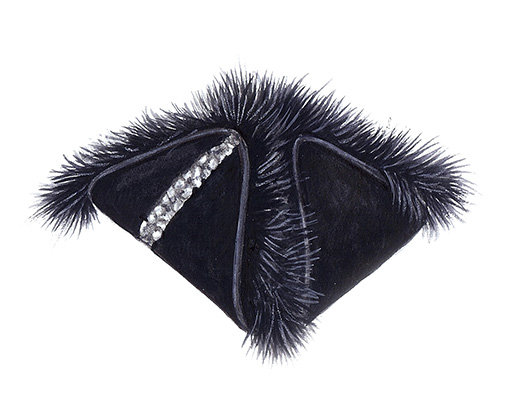
Aviator Also known as a bomber hat, the aviator was worn by pilots in the days of open-air cockpits to keep their heads warm and protect their ears from the biting cold. With the advent of closed-cockpit airplanes, they became less necessary, although they’re still popular as winter hats.
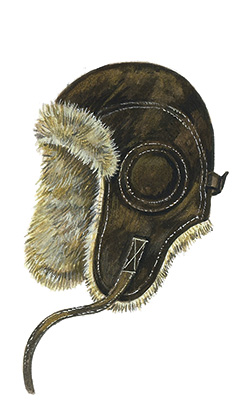
Wide-awake One of the most popular pieces of Victorian headwear, this soft, floppy, wide-brimmed felt hat travelled easily and protected the wearer from the sun. It was popular with the middle and working classes and was also worn by Boy Scouts until the turn of the 20th century.
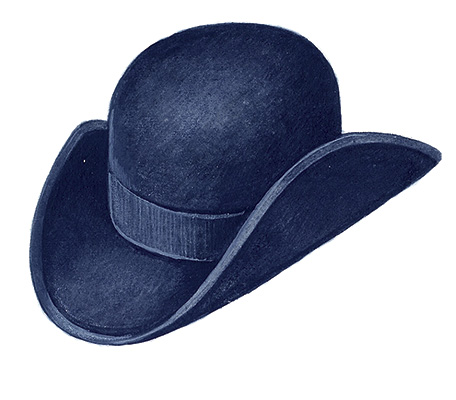
The Greek fisherman As its name suggests, the Greek fisherman, with its firm visor and loose fabric, was invented in Greece (in Athens). It dates back to 1886, when it served as a staple for many maritime military units, but it became more famous in the 1960s, when the Beatles singer John Lennon adopted it.
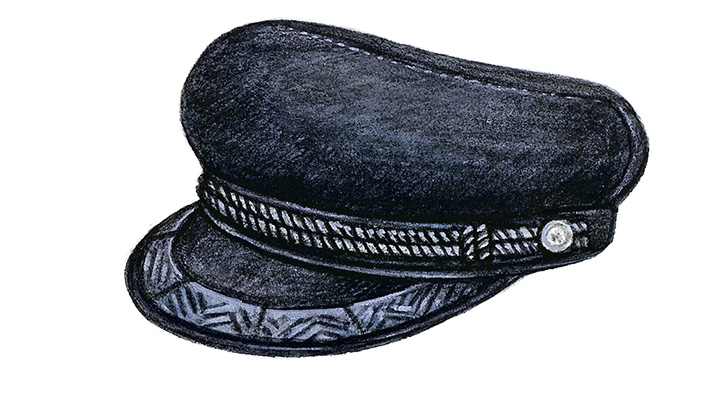
Shovel This black, felt hat, with its shallow crown and brim rolled up to resemble a shovel, was popular among clergymen in Victorian Britain. For many years, it was known as a Pickwick, after the hugely popular Dickens character, who was fond of wearing the design.
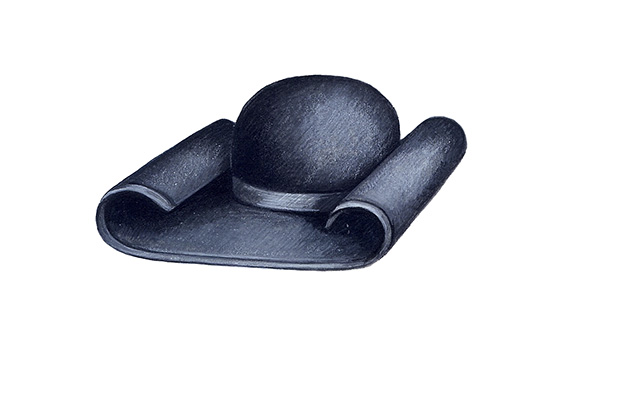
Sparrowhawk copulating Not exactly headwear per se, but an important piece of equipment nonetheless if you’re a sparrowhawk breeder wanting to use artificial insemination. A male donor bird is trained to copulate voluntarily with a latex, dome-shaped, indented ‘hat’—of the right proportions for his size that collects his semen.
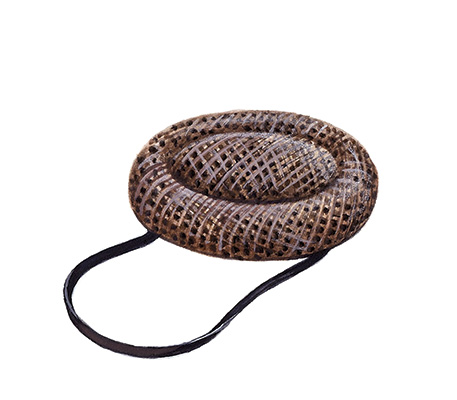
Fez Initially a brimless bonnet of red, white or black with a turban woven around it, it assumed its current design when the turban was eliminated, the bonnet shortened and the colours edited to just red. In the days of the British Raj, a fez indicated the wearer was a high-class Muslim, often a successful merchant. The comedian Tommy Cooper famously sported a red fez in his performances and the hat was more recently worn by Matt Smith in Doctor Who.

Nightcap Ebenezer Scrooge, Mr Pickwick and Mr Giles all wore a nightcap. These soft, cloth hoods, which were pulled over the head to keep the wearer warm at night, were very popular in Dickensian times before the advent of effective home heating—when they would have been teamed with a bedshirt or pyjamas.
